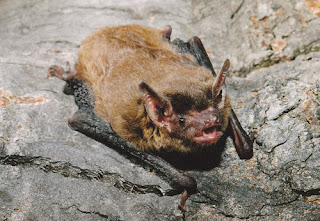This important site is a 79 hectare block of land dissected by Bambara Road, Kariong, roughly 5 kms SW of the Gosford CBD. Bambara Rd is accessed on the eastern side of Woy Woy Rd 2 kms south of its intersection with the Pacific Hwy, and has no other public access. The land is divided up into 7 privately owned blocks and is bordered on all sides by Brisbane Water National Park. These 79 hectares are largely made up of intact, natural vegetation with significant biodiversity, and is also recognised as having a noteworthy indigenous heritage collection. All 7 blocks of land have recently been subject to building applications for a single dwelling on each of the blocks. If approved the development would have had a significant impact on the natural and indigenous aspects of the area for a number of reasons. The local Gosford City Council knocked back the development, recognising these impacts, and a developers appeal to the NSW Land and Environment Court was dismissed on the same grounds. A for sale sign still looms on the corner of Woy Woy and Bambara Roads (see post ‘photos of Bambara Rd area’), and it is of the concern of our campaign group that development is still possible and that this important piece of land should be placed in public hands, ideally being incorporated into the Adjacent National Park for its security for future generations. We will now go through some of the reasons for why we think this should happen.
Much of these properties are made up of dry Eucalyptus open forest, which is recognised as having a high bush fire risk. Any dwelling built in such an environment would need to have an extensive area cleared around it as an Asset Protection Zone (APZ) to prevent danger from fire. Also Bambara road would also need to be widened and a separate entry point for the road would need to become available, all to alleviate the risks from fire. For example, the previously mentioned development proposal requires the felling of some 951 mature trees and associated vegetation to make just 7 dwellings possible. Changing of back-burning regimes may also occur to alleviate such risks, taking the emphasis off the health of the natural area onto the safety of the inhabitants. In the past there has been dwelling on these properties but have been removed. These are located on a few cleared parts of land around the area where the neglect of these has allowed natural vegetation to regrow (see post ‘photos of Bambara Rd area’). All of these properties are currently uninhabited.
These properties are bounded on all sides by Brisbane Water National Park. This Park is recognised as having a high biodiversity. 270 species of vertebrates have been recorded in the park, including 150 species of birds, and 50 species of reptile, which represents an incredibly high 10 % of all the worlds’ species. Dozens of endangered and threatened species are recognised including: the economically important Koala, The Eastern pygmy possum, Masked owl, and the giant burrowing frog, plus many more (see post ‘Animals found in Brisbane Water N.P) These properties are recognised as potential habitat for many of these species.
These properties also lie on an important wildlife avenue between two significant parts of the National Park, and also impedes movement into Strickland State forest, which is also an important nature refuse. Although the name ‘state forest’ might suggest use for forestry, this land use is unlikely in the future, and is more likely to become a conservation reserve. Land cleared for APZs plus the widening of Bambara road will greatly impede movement of plant seeds and animals. Development will also aid the proliferation of non native species such as foxes and rabbits, and the further introduction of domestic animals (cats, dogs, horses) which will further effect wildlife thoroughfare. Many of the inhabiting animals require large home ranges, so to keep populations high and maintain genetic diversity large continuous habitats are necessary. Increased human activity in the area will discourage animals from using the area, and increased vehicle traffic will cause further danger. It is also the concern of our campaign group that land use restrictions will also not be adhered to by residents.
An environmental impact assessment made by ‘Abel Ecology’ on behalf of the developers found that 12 threatened species (9 fauna and 3 flora) were directly observed on these properties. These include: Spotted-tailed Quoll, Long-nosed Potoroo, Powerful Owl, darwinia glaucophylla a very localised prostrate Shrub, and the Red-crowned toadlet (see post ‘some threatened species of the Bambara Road Properties’). There was found to be 5 distinct vegetation communities, including the greatly threatened sandstone hanging swamps.
These properties are also home to some spectacular wild-flower displays (see post ‘Photos of Bambara Road Properties’). At certain times of the year their ubiquity is profound, bringing about a plethora of bird and insect life. This area is has also a large array of spectacular mature Waratahs, the state’s floral emblem. Such masses of flowers are potential for some of the rarest birds in the world such as the Regent Honeyeater whose continued existence hangs by the proverbial thread.
These 79 hectares are too important to the future sustainability of this nation and community to risk for the residence of just a few. Help us lobby the State Government and Gosford Council to buy these blocks of land ‘on just terms’ from their owners. Such large areas of relatively untouched wilderness are going to be the most sustainable wildlife refuses for the unforeseeable future and these properties are a key aspect of this. Please help us put this land in the public’s hands.













































